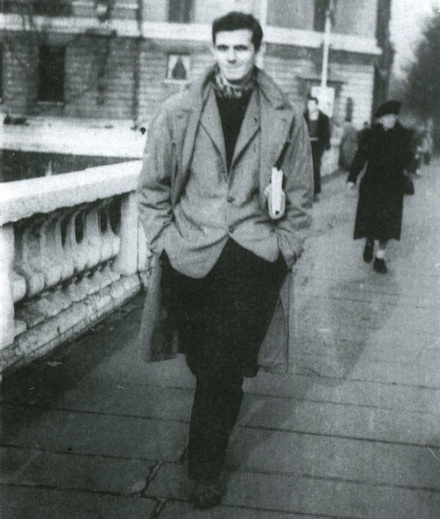Battaglia Comunista, a. XV, n. 2 (febbraio-marzo 1954).

The document with which we start off this issue was written by Paul Romano, an American worker. There exists an America that no one talks about, which is to be found beyond the myth of the refrigerator, the automobile, and the television, and beyond the myth of affluence for all. It is the America of the factory: an unknown America whose history is made of strikes, exploitation, and proletarian misery. The protagonists of this story are the workers, and Paul Romano is a worker who writes about the life of the workers.
It is no coincidence that such a deeply interesting document comes from the most highly industrialized country in the world, to counter the lie that the American proletariat has no class consciousness.
We know the difficulties through which the revolutionary vanguard must move in the United States. The group that Paul Romano belongs to was formed within the American Trotskyist organization, but split off following a profound disagreement. At the heart of this disagreement lay the refusal to adhere to the watchword of “unconditional defense of the USSR,” which constituted the classical platform of Trotskyism, represented in the United States by the Socialist Workers’ Party; the evaluation of the USSR as state capitalist; the same analysis of the capitalist situation as that of the Workers’ Party, another wing of American Trotskyism, which did not present anything fundamentally new, while this group stressed the concentration and statization of the economy; and, finally, differences over their political tasks, since the seizure of power by the proletariat remained fundamental to the group that published “The American Worker” in 1947. Formed in 1950 as an independent organization, since October 1953 the group has published a bimonthly newspaper, Correspondence, of which ten issues are already out. “The American Worker,” as much as the newspaper Correspondence, expresses with great force and profundity this idea, practically forgotten by the Marxist movement after the publication of the first volume of Capital, that the worker is first of all someone who lives at the point of production of the capitalist factory before being the member of a party, a revolutionary militant, or the subject of coming socialist power; and that it is the productive process that shapes his rejection of exploitation and his capacity to build a superior type of society, his class solidarity with other workers, and his hatred for exploitation and the exploiters, the traditional bosses of yesterday and the impersonal bureaucrats of today and tomorrow. The development of this fundamental idea is the principal contribution of this group to the revolutionary movement of today. But the documentary value of Paul Romano’s book resides also in this: that it reveals the conditions of the workers to be universal. For this reason, we invite the comrades, the workers, the readers to write to Battaglia, to compare their own situations to that of the “American worker,” which is to say, with the worker of all countries – the worker with whom they feel something similar and yet see something different.
—Translated by Salar Mohandesi
 Viewpoint Magazine
Viewpoint Magazine